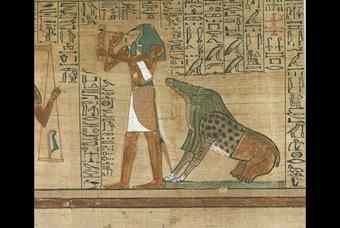The British Museum’s major Autumn exhibition, supported by BP, will present and explore ancient Egyptian beliefs about life after death. Journey through the afterlife: ancient Egyptian Book of the Dead will showcase the rich textual and visual material from the British Museum’s unparalleled collection of Book of the Dead papyri.
 The ‘Book’, used for over 1500 years between c. 1600 BC and 100 AD, is not a single text, but a compilation of spells thought to equip the dead with knowledge and power which would guide them safely through the dangers of the hereafter and ultimately ensure eternal life.
The ‘Book’, used for over 1500 years between c. 1600 BC and 100 AD, is not a single text, but a compilation of spells thought to equip the dead with knowledge and power which would guide them safely through the dangers of the hereafter and ultimately ensure eternal life.
The British Museum has one of the most comprehensive collections of Book of the Dead manuscripts on papyrus in the world, and this exhibition will be the first opportunity to see so many examples displayed together.
The exhibition will include the longest Book of the Dead in the world, the Greenfield Papyrus, which measures 37 metres in length and has never been shown publicly in its entirety before. Also on display will be the famous paintings from the papyri of Ani and Hunefer, together with selected masterpieces on loan from major international collections.
These treasures will be exhibited alongside a dazzling array of painted coffins, gilded masks, amulets, jewellery, tomb figurines and mummy trappings. State-of-the-art visualisation technology will provide new ways of accessing and understanding this key source in the history of world religions.
The Book of the Dead opens a window onto the complex belief systems of the ancient Egyptians where death and afterlife were a central focus.
Though the name may be familiar today, the wealth of magical images and texts is actually much richer than is generally known.
Beautifully coloured illustrations graphically show the fields and rivers of the Netherworld, the gods and demons whom the deceased would meet, and the critical ‘weighing of the heart’ ritual the judgement which would determine whether the soul was admitted into the afterlife or condemned to destruction at the hands of the monstrous ‘Devourer’.
Although the earliest texts appeared on the mummy shrouds of royal families and high officials, papyrus became the texts’ main medium and remained so for more than 1,000 years.
Source: Art Daily